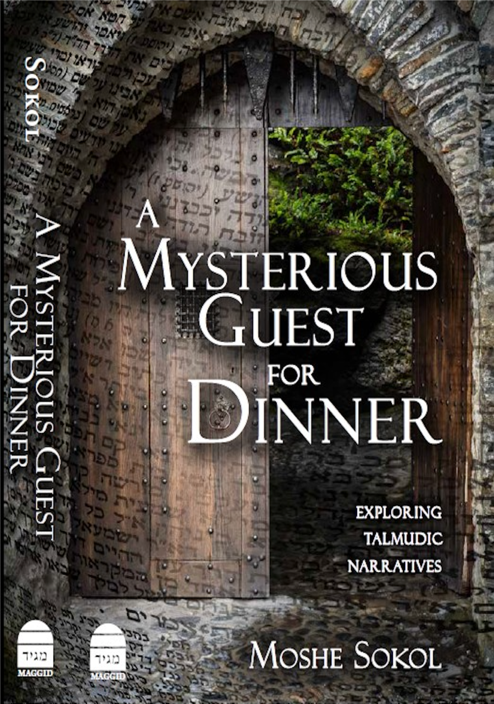
Highlighting: “A Mysterious Guest for Dinner: Exploring Talmudic Narratives” by Rabbi Dr. Moshe Sokol. Maggid. 2024. 260 pages. ISBN-10: 1592646743.
Four years ago, I reviewed “The Snake at the Mouth of the Cave” by Rabbi Dr. Moshe Sokol. Sokol is the dean of the Graduate School of Jewish Studies at Touro University.
It is said that when giving public lectures on Aggadah, Rabbi Joseph Soloveitchik would work especially hard on them. He felt the effects would not be devastating if an attendee misunderstood his Talmudic lectures. However, given the nature of Aggadic texts, if an attendee misunderstood the lecture, they could leave with heretical ideas or think that the rabbis of the Talmud were buffoons.
The nature of Aggadic texts is that they contain ideas that are quite deep but prone to misinterpretation. Often called rabbinic tales, Aggadah is far from simple anecdotes. They explore deep, metaphysical concepts hidden deep in the text. Furthermore, misunderstanding these narratives could lead one to believe in God’s corporeality, polytheism, or other heretical concepts. Thus, Rabbi Soloveitchik’s effort was to ensure that they were understood with crystal clarity.
Sokol is back with another superb book, “A Mysterious Guest for Dinner: Exploring Talmudic Narratives.”. He uses the same approach to dive deeper into the Aggadah and turn the seemingly simple stories into deeply meaningful and sophisticated narratives.
Professor Shai Secunda wrote of Rabbi Dr. David Weiss Halivni that he was “like a surgeon with a scalpel, an archaeologist with a spade.” Sokol takes the same approach to Aggadah, cutting and digging deep into the numerous layers and meanings of enigmatic Aggadic texts.
Here, Sokol explores 10 different Talmudic narratives. In Chapter 3, Sokol shows that the book’s title refers to an incident with Rav Yannai and a mysterious guest, as detailed in Leviticus Rabba.
There, Rav Yannai, an eminent sage, mistreats a dinner guest, who, at first thought to be educated, turns out ostensibly to be an ignoramus. Part of Rav Yannai’s viewpoint may have to do with the negative attitude that many Sages of the Talmudic era held towards ami ha’aretz—ignoramuses.
The story’s basis is that the dinner guest’s contradictory actions bespeak the human condition in all its complications, contradictions and opacity. The masks the mysterious dinner guest wore are brilliant manifestations of the midrashist’s take on the human condition.
Another set of gems of insights from Sokol is around the enigmatic Aggadah in Berakhot that finds Rabbi Yohanan ben Zakkai crying on his deathbed. This is the same Rabbi Yohanan ben Zakkai who single-handedly resuscitated the Jewish people from the trauma of the destruction of the first temple.
To understand why he cried, Sokol contrasts him with Rabbi Akiva, who, according to one Talmudic tradition, was his great critic and, in many ways, his polar opposite.
Rabbi Yohanan ben Zakkai’s approach reflects a deep intellectual conservatism in a quite straightforward sense. When he made three requests to Vespasian, he sought no more nor less than to conserve the wisdom of the past.
The strategy board game Go has relatively simple principles, so one can quickly start playing. However, its motto is that it takes “minutes to learn and a lifetime to master.”
Similarly, the Aggadic texts that Sokol analyzes are initially simple stories. But the Talmudic sages hid many layers of complexity and depth in that simplicity. Sokol removes those layers and has written a book that is as intellectually stimulating as it is enlightening.
Ben Rothke lives in New Jersey and works in the information security field. He reviews books on religion, technology, philosophy and science. Follow him on Twitter at @benrothke.











